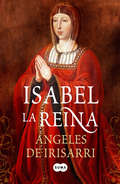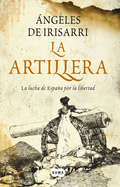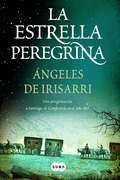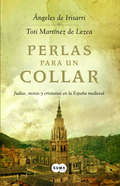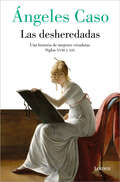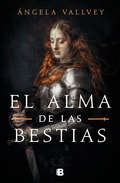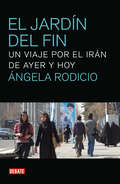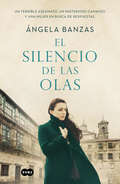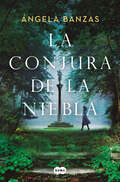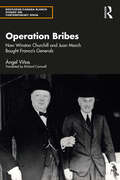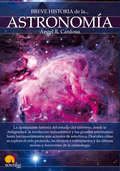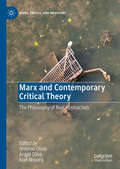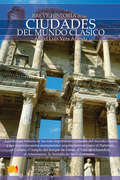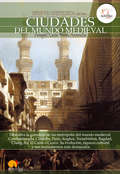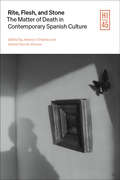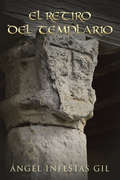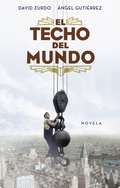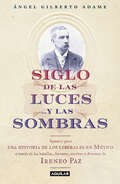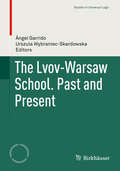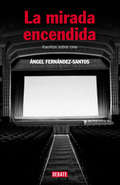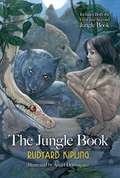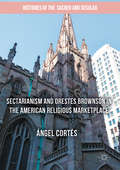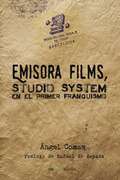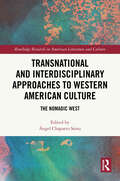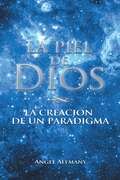- Table View
- List View
Isabel, la Reina
by Ángeles De IrisarriIsabel la Católica, la reina que hizo posible el Imperio español y la mujer que se entregó y se enfrentó a todo. Pocas mujeres han tenido tanto poder como Isabel la Católica a lo largo de la Historia. Bajo su reinado, al que llegó por azares del destino y tras su boda con el que sería Fernando el Católico, rey de Aragón, se logró la unión de reinos en sus personas y España alcanzó una relevancia impensable dentro del ámbito europeo. Extendió sus fronteras al conquistar el reino de Granada para terminar la Reconquista y mucho más lejos, allende los mares, para descubrir un nuevo continente de dimensiones inimaginables, con lo cual la Señora pudo añadir a sus súbditos millones de musulmanes y de indios. A lo largo de su reinado, su mano no tembló ante dificultades tanto personales como nacionales, y supo asentar su autoridad en un entorno de hombres, ora otorgando mercedes, ora quitándolas, ora reduciendo por las armas a los levantiscos, ora premiando generosamente a los que con ella estaban; si bien siempre de acuerdo con su egregio esposo y acorde con sus sólidos valores morales. Es esto lo que todos sabemos de la vida de Isabel la Católica, de aquella mujer, austera de modos, que estaba destinada a ser y vivir como la gran soberana que fue. De una mujer que, además de reina, fue amante esposa, preocupada madre, leal amiga y fervorosa sirviente de la religión cristiana. Una mujer de carne y hueso después de todo, capaz de los mayores sacrificios y los más altos sentimientos. Es aquí donde la historiadora y novelista Ángeles de Irisarri pone de relieve el auténtico retrato de una mujer y de una reina irrepetible en la Historia de España y universal, hablando de lo menudo de la Corte, de la vida cotidiana del siglo XV, de los tiempos difíciles a la par que gloriosos que se vivieron... Y de tres personajes más, asaz curiosos, que se cruzan a lo largo de la narración con doña Isabel, una reina como ninguna.
La Artillera
by Ángeles De IrisarriLa lucha de España por la igualdad. Agustina de Aragón, conocida como la Artillera, junto a la condesa de Bureta, Manuela Sancho, Casta Álvarez, María Lostal, María Agustín y la madre Rafols sobrevivieron en una ciudad en la que el cronista Casamayor escribió que los atacantes -más parecían Nerones que franceses-, en la que el último muerto dejaba enseguida de ser último en una sucesión aterradora. Estas mujeres y otras, y otros muchos hombres, sin nada que llevarse a la boca y rodeados de muertos, pues la peste hizo acto de presencia en Zaragoza en lo más crudo del invierno y del combate, quedaron inscritas con letras de oro en la Historia de España por sus heroicos hechos en defensa de la libertad. Ángeles de Irisarri recrea en esta novela el día a día de la guerra muros adentro de la ciudad a través de diez mujeres, unas reales, otras imaginarias, que representan a todas las clases sociales y que, al grito de «Vencer o morir», fueron capaces de tomar las armas y hasta disparar cañones.
La estrella peregrina: Una peregrinación a Santiago de Compostela en el Año Mil
by Ángeles De IrisarriLa historia de un peregrinaje más a través de un milenario camino. En el Año Mil, tras el fallecimiento de su marido, la condesa de Conquereuil emprende peregrinación a Santiago de Compostela desde la Bretaña francesa, para postrarse ante el Apóstol, recibir la indulgencia y pedirle que haga crecer a su hija pequeña, que es enana y que, a causa de su deformidad, ha sido rechazada por las gentes y hasta por su propio padre, pues la han creído endemoniada. Sale al camino con un séquito de 200 servidores, recorre vías romanas, caminos y veredas; atraviesa puentes inestables; se hospeda en conventos, hospitales o posadas, y duerme bajo su tienda o al raso. Y a lo largo de tantas millas se topa con increíbles y estrafalarios personajes, y vive no menos excitantes aventuras. Conquereuil, Nantes, Niort, Burdeos, Belin, Lesperon, Roncesvalles, Pamplona, Gares, Lizarra, Nájera, los montes de Oca, Burgos, Castrogeriz, Carrión, León, Astorga, la tierra del Bierzo, el puerto del Cebrero, Triacastela, Sarria, Mellid, hasta que, antes del monte del Gozo, a lo lejos se avista la ciudad de Santiago de Compostela. Puntos que conforman el Camino Francés, que consolidó la prosperidad de las poblaciones que se encontraban o se levantaron a su paso. Por él no sólo circularon personas, sino, con ellas, ideas y arte, en un camino que fue de ida y vuelta. En efecto, en una Europa fragmentada política y lingüísticamente, el Camino de Santiago sirvió desde entonces como nexo de unión entre todos los pueblos que la constituyen en el presente. Ángeles de Irisarri nos traslada esta vez a la Europa medieval, en la que se gestó un itinerario que hasta el día de hoy han recorrido millones de peregrinos. Una narración plagada de variopintos personajes, que nos recuerdan a Chaucer o a Bocaccio. El lector no sólo recorrerá con gusto las páginas de esta afable novela, sino también un camino que le puede llevar hastadonde él quiera.
Perlas para un collar: Judías, moras y cristianas en la España medieval
by Ángeles De Irisarri Toti Martínez de LezeaJudías, moras y cristianas en la España medieval. Las dos grandes damas de la novela histórica española unen sus fuerzas en un apasionante retrato de la Edad Media en la Península. Para escribir este libro se han unido dos autoras de renombre. Ángeles de Irisarri es autora de las diez historias de mujeres cristianas y Toti Martínez de Lezea de las diez de judías; las diez historias de moras se las han repartido a partes iguales. Entre ambas plumas -quizá las más representativas de la novela histórica en España- han sacado a la luz treinta narraciones cortas que transcurren en la época medieval y reflejan con exactitud las interrelaciones entre las tres culturas y las tres religiones y, además, cómo discurría la vida cotidiana de las protagonistas, ya fueran nobles o plebeyas. Ambas consiguen con esta obra un atrayente y vívido retrato de aquella sociedad, que hoy, por su lejanía, resultatan ajena como desconocida.
Las desheredadas
by Ángeles CasoTras el éxito de Las olvidadas, con más de medio millón de ejemplares vendidos, vuelve Ángeles Caso, ganadora de los premios Planeta y Fernando Lara y traducida a quince idiomas, con un proyecto único Un libro que nos desvela a las grandes mujeres creadoras de los siglos XVIII y XIX que quedaron en la sombraHace casi dos décadas Ángeles Caso iniciaba con Las olvidadas un proyecto único: la reconstrucción de una genealogía cultural femenina formada por todas las mujeres que rompieron con lo que la sociedad pretendía imponerles y se atrevieron a vivir a contracorriente, a crear y pensar un mundo mejor, aunque solo recibieran a cambio el desprecio de la crítica y el canon. Las desheredadas aborda los siglos XVIII y XIX, una época crucial en la historia de Occidente, germen de la que vivimos hoy. Es el tiempo de pintoras como Élisabeth Vigée Le Brun o Adélaïde Labille-Guiard; de las ilustradas lady Mary Montagu o la duquesa de Osuna; de científicas como la marquesa de Châtelet y Ada Lovelace; de las revolucionarias traicionadas como Olympe de Gouges y Mary Wollstonecraft; de escritoras como Mary Shelley, las Brontë o Emilia Pardo Bazán; de las primeras feministas como Flora Tristan, Concepción Arenal o Rosario de Acuña; de las impresionistas como Berthe Morisot o Camille Claudel... Se dedicaron a las artes, al pensamiento, lucharon por la libertad y los derechos de los más desfavorecidos, pero la burguesía ilustrada y liberal acabó imponiendo el relato oficial. Y en él no hubo cabida para ellas. De ese rechazo nacería el feminismo, que iniciaba entonces su carrera imparable. Ángeles Caso funde géneros literarios y nos entrega una obra emocionante, reivindicativa y profundamente rigurosa sobre las heroínas que osaron alzar la voz y la cabeza. Este libro ilumina por un momento las vidas de algunas de ellas para que nos permitan sentir el deseo de iluminar las de las demás. La crítica ha dicho sobre Quiero escribirte esta noche una carta de amor:«Un libro espléndido, cartas de rendición, de entrega absoluta, [...] piezas literarias de altos vuelos, literatura de la importante, de la que te salva».Milena Busquets, El Periódico «Una inspiración para escribir, para amar, e incluso para dejar un amor que nos destruye».Semana «Acceder a los textos íntimos de estas escritoras es un privilegio: cada una se muestra en el amor como en su obra, con su estilo y su voz. [...] Un catálogo de relaciones, una cronología universal de los amantes: profundamente enternecedor».Aloma Rodríguez, El Mundo «Ángeles Caso nos muestra la fragilidad y vulnerabilidad del ser humano ante uno de sus mayores anhelos en la vida: amar y ser amado. [...] Un libro conmovedor y hermoso que recuerda cómo el amor es el misterio sobre el que el ser humano avanza en la vida en medio de luz, penumbra u oscuridad».Santiago Vargas, The Huffington Post «Leer este texto supone un viaje a través del tiempo, gratificante y de gran placer para el lector; y una reflexión sobre la humanidad y el amor».Maria Antich, Diario de Mallorca
El alma de las bestias
by Ángela VallveyÁngela Vallvey trasciende los cánones del género histórico en esta ambiciosa nueva novela. Un niño ensangrentado y perdido en el bosque. Una reina demasiado joven que no acepta su destino. Un sefardita que custodia un libro misterioso. Un guerrero que pide justicia. Un asesino que mata como un animal... Estos son algunos de los personajes que desfilan por las páginas de esta fascinante historia, que discurre entre los años de Jesucristo y el reino medieval de León en tiempos del Cid. Una aventura apasionante que mezcla personajes históricos y anónimos en épocas oscuras y violentas en las que, a pesar de todo, hombres y mujeres se atrevían a recorrer caminos inciertos y a enfrentarse con peligros inimaginables para cumplir su destino.
El jardín del fin: Un viaje por el irán de ayer y hoy
by Ángela RodicioUn retrato del Irán actual y un viaje por la historia de Persia. Irán es y ha sido siempre un enclave fundamental en Oriente Medio. Las revueltas populares del año 2009 fueron el germen de las convulsiones que sacuden hoy al mundo árabe, prueba de que Irán sigue siendo un barómetro para Occidente. El Jardín del Fin es un recorrido por la historia de este país, un libro en el que confluyen las relevantes negociaciones geoestratégicas sobre el armamento nuclear con las anécdotas y la picaresca cotidiana de quienes tratan por todos los medios de sobrevivir a la dictadura. Ángela Rodicio, periodista y escritora, ha viajado desde el mar Caspio, en el norte, hasta el golfo Pérsico, en el sur; desde Baluchistán, en la frontera con Afganistán y Pakistán, en el este, hasta Juzestán, en los límites con Iraq, al oeste. Este libro es el resultado de todos esos viajes y de casi dos décadas de estudio y observación directa delos acontecimientos que han ido conformando la delicada relación de Irán con la Comunidad Internacional, y de los propios iraníes entre sí. Varias entrevistas y conversaciones con los personajes más destacados del país antiguamente conocido como Persia completan un fresco con claroscuros de un territorio que mantiene en vilo al resto del planeta.
El silencio de las olas
by Ángela BanzasUn sueño recurrente y perturbador. Un misterioso camafeo y una mujer en busca de respuestas. Un secreto silenciado durante años rompe el rumor de las olas Adela Roldán, casada y con un hijo, lleva una apacible vida en familia salvo por una pesadilla recurrente que la perturba desde que era solo una niña. En ella ve cómo una joven es asesinada en presencia de su hija pequeña. Cuando despierta no recuerda nada más, hasta que una noche identifica el nombre del pueblo en el que ocurre todo: Vilar de Fontao, en Galicia. Decide viajar hasta allí y comprobar si la casa donde tiene lugar el horrible crimen existe. Lo que Adela desconoce es que, en realidad, emprenderá un viaje de más de cien años que la llevará desde un pazo en la Costa da Morte hasta la ciudad de Santiago de Compostela. Un viaje en el que perseguirá descubrir la verdad sin saber que se acerca a un secreto que unos intentan desvelar y que otros quieren preservar. Haciendo gala de un estilo lleno de resonancias e imágenes evocadoras, Ángela Banzas construye con maestría una novela que conecta la historia de varias generaciones de mujeres que deberán sobreponerse a la adversidad, a la traición, al dolor y al miedo, sin dejar de luchar con pasión por aquello en lo que creen en unos tiempos marcados por el clasismo rural, el hambre y la guerra, los bandos, la desconfianza y la muerte. «Aprende a amar tu destino. Cuando otros vean lluvia y la repudien, tú sonríe a la tierra agrietada y mortecina y espera la simiente que crecerá mañana. Sé paciente y perservera, pues en la oscuridad la luz brilla con más fuerza».
La conjura de la niebla
by Ángela BanzasDespués del éxito de El silencio de las olas, Ángela Banzas regresa con una novela vibrante que mezcla superstición y leyendas gallegas con una investigación y un secreto familiar «Siempre supo que iba a suceder. No sabía cómo ni tampoco cuándo, pero sabía que el mal vivía en la niebla y se alimentaba del pueblo». La desaparición de una adolescente sacude la pequeña localidad de Illa de Cruces. Allí la jueza Elena Casáis se hará cargo de la instrucción del caso pese a ignorar que ese suceso está conectado con la desaparición de la hermana de su madre, su tía Melisa. Un misterio de hace treinta años del que una mujer ingresada en un psiquiátrico y el viejo curandero de la isla guardarán las claves para resolverlo. Después del éxito de El silencio de las olas, Ángela Banzas construye una historia vibrante en la que crímenes, intrigas y secretos familiares conviven con creencias y supersticiones populares bajo el telón de fondo de la Ría de Arousa. Un paisaje gallego protagonizado por el mar y un frondoso bosque de laureles en donde cruceiros de piedra custodian terribles secretos que la niebla quiere ocultar. Instagram: angelabanzas Natural de Santiago de Compostela, es licenciada en Ciencias Políticas y de la Administración por la Universidad de Santiago y MBA por la Escuela Europea de Negocios de Madrid. Su trayectoria profesional ha estado siempre ligada a la consultoría de Administración Pública. Su primera novela, El silencio de las olas (Suma de Letras, 2021), obtuvo un gran éxito de público y ventas. La conjura de la niebla es su segunda novela. Sobre El silencio de las olas se ha dicho:«Un maravilloso viaje a un pasado de historias entrelazadas, prosa exquisita y misterios a flor de piel».María Reig, autora de Papel y tinta «Parafraseando Elhalcón maltés, esta novela está hecha del mismo material con que se tejen los sueños. Le auguro todos los éxitos».Xurxo Fernández, El Correo Gallego
Operation Bribes: How Winston Churchill and Juan March Bought Franco’s Generals (Routledge Studies on Contemporary Spain)
by Ángel ViñasThis forensic study of recently opened documents in Britain’s National Archives reveals for the first time the details of an officially unnamed secret operation authorised by Winston Churchill in 1940 to keep Spain neutral in the Second World War through the financial manipulation of Spanish generals.Viñas focuses on the crucial roles played by the British ambassador in Madrid, Sir Samuel Hoare; the embassy’s naval attaché, Captain Alan Hillgarth and – hitherto unknown to Anglophone readers – the Spanish businessman, Juan March, perhaps one of the richest men in Spain at the time and a financial backer of the military conspirators sparking the Spanish Civil War in 1936. He identifies the likely recipients of the bribes, how they were paid and the influence they wielded on Spain’s dictator, General Francisco Franco, who together with his notorious foreign minister, Ramón Serrano Suñer, was minded to enter the war on the side of the Axis. With masterly analysis, this book places the bribes paid by Britain in the jigsaw puzzle of why, after all, Spain remained neutral.This volume is a pioneering and important contribution for scholars and students of Anglo-Spanish relations, Spanish-Axis relations and wider strategic aspects of the Second World War.
Breve historia de la astronomía (Breve Historia)
by Ángel R. CardonaLa apasionante historia del estudio del universo, desde la Antigüedad, la revolución heliocéntrica y los grandes astrónomos hasta los conocimientos más actuales de astrofísica. Descubra cómo se explora el cielo profundo, las técnicas e instrumentos y las últimas teorías y horizontes de la cosmología. Esta obra estudia la Historia de la astronomía desde sus comienzos en el mundo prehistórico, pasando por la transformación de la visión de la Tierra como centro del universo conocido al Sol como eje de todo, hasta llegar a los conocimientos más actuales del cosmos. Describimos en ella los objetos estelares conocidos: galaxias, estrellas y sus tipos, planetas, satélites, asteroides, cometas... Además comentamos cómo se estudia el firmamento, cómo se apagará nuestro Sol y como morirá la Tierra, y más allá, cuál fue el origen y cómo será el fin del universo, entre muchas otras cosas. Argumentos de venta -El autor explica de modo riguroso, claro y atractivo los misterios del universo apoyado en las publicaciones y estudios científicos más actualizados. - Esta obra da respuesta a la controversia generada por algunas cuestiones de origen bíblico acerca de la fecha de nacimiento de Jesús o el origen de la estrella de Belén. - El autor desvela los primeros métodos de estudio del firmamento: desde hace más de 3.600 años con los primitivos ritos druídicos hasta la supernova de los anasazi, pasando por el saber oriental y la astronomía precolombina basada en los calendarios mayas y el culto inca al sol. -R. Cardona hace especial hincapié en los últimos descubrimientos astronómicos: agujeros negros, cúmulos de galaxias, púlsares,... Todo ello siempre bajo la visión de los hombres que lo hicieron posible, astrónomos, matemáticos, físicos e incluso filósofos, que con su visión privilegiada hicieron posible que hoy estemos más cerca de las estrellas.
Marx and Contemporary Critical Theory: The Philosophy of Real Abstraction (Marx, Engels, and Marxisms)
by Antonio Oliva Ángel Oliva Iván NovaraThis edited volume brings together an international and interdisciplinary group of scholars to explore the traces of the idea of “Real Abstraction” in Marx’s thought from the early to late writings, as well as the theoretical and practical consequences of this notion in the capitalist social system. Divided into two main parts, Part One reconstructs Marx’s notion of “Real Abstraction” and the influences of earlier thinkers (Berkley, Petty, Franklin, Feuerbach, Hegel) on his thoughts, as well as the further elaborations of this concept in later Marxist thinkers (Sohn-Rethel, Lukács, Lefebvre, Adorno and Postone). Part Two then considers the reverberations of the notion in the field of critical theory from a more abstract critique of capitalist social relations, to a more concrete understanding of historical movements. Taken together, the chapters in this volume offer a focused look at the concept of “Real Abstraction” in Marx.
Breve historia de las ciudades del mundo clásico (Breve Historia)
by Ángel Luis Vera ArandaLa Breve historia de las ciudades del mundo clásico presenta los cambios y las transformaciones que experimentaron ciudades como Alejandría, Atenas, Roma, Pérgamo, Antioquía, Petra, Seleucia… desde su surgimiento en el primer milenio a. C. hasta su conversión en verdaderas metrópolis del mundo clásico.
Breve historia de las ciudades del mundo medieval (Breve Historia)
by Ángel Luis Vera ArandaLa Breve historia de las ciudades del mundo medieval presenta los cambios y las transformaciones que experimentaron ciudades como Angkor, París, Bagdad,… describe su grandeza, su evolución, auge y decadencia, llegando, de modo resumido , a la situación actual
Rite, Flesh, and Stone: The Matter of Death in Contemporary Spanish Culture (Hispanic Issues)
by Elizabeth Scarlett William Viestenz Layla Renshaw N. Michelle Murray Eugenia Afinoguénova Pedro Aguilera-Mellado Ana Fernández-Cebrián Patty Keller Ángel Loureiro Cristina Moreiras-Menor Annabel Martín Jordi Moreras Sol TarrésForensic science provides information and data behind the circumstances of a particular death, but it is culture that provides death with meaning. With this in mind, Rite, Flesh, and Stone proposes cultural matters of death as its structuring principle, operating as frames of the expression of mortality within a distinct set of coordinates. The chapters offer original approaches to how human remains are handled in the embodied rituals and social performances of contemporary funeral rites of all kinds; furthermore, they explore how dying flesh and corpses are processed by means of biopolitical technologies and the ethics of (self-)care, and how the vibrant and breathing materiality of the living is transformed into stone and analogous kinds of tangible, empirical presence that engender new cartographies of memory. Each coming from a specific disciplinary perspective, authors in this volume problematize conventional ideas about the place of death in contemporary Western societies and cultures using Spain as a case study. Materials analyzed here—ranging from cinematic and literary fictions, to historical archives and anthropological and ethnographic sources—make explicit a dynamic scenario where actors embody a variety of positions toward death and dying, the political production of mortality, and the commemoration of the dead. Ultimately, the goal of this volume is to chart the complex network in which the disenchantment of death and its reenchantment coexist, and biopolitical control over secularized bodies overlaps with new avatars of the religious and non-theistic desires for memorialization and transcendence.
El retiro del templario
by Ángel Infestas GilUna crónica excepcional sobre el el final de los templarios de Castilla a través del viaje interior de Lucas Gil de Zamora, un caballero que busca, en un mundo ya sin cruzadas, un nuevo sentido a la vida. <P><P>"Al final de la gestacruzada, después de la caída de San Juan de Acre, el caballero Lucas Gil de Zamora, que se encuentra malheridoe impedido para el resto de su vida, es destinado por los maestres de Temple a la encomienda de Villalpando, en el reino de León. Asentado en esa villa de Tierra de Campos, frontera entre los viejos reinos de la corona de Castilla, el nuevo comendador inicia un viaje interior en busca de la razón de ser de su orden y de la propia identidad ahora que las cruzadas ya no existen, a la vez que seimplica sin límites en la vida de sus gentes, hasta el punto de poder comprobar cómo las creencias, el afán de poder y la necesidad de sobrevivir tejen una trama compleja que les engulle a todos. Cristianos, judíos y moros; ricos hombres, caballeros, clérigos y frailes; artesanos, labriegos y pastores, gentes de toda condición actúan en esta novela como si de un escenario se tratara, tras cuyas bambalinas se esconden figuras misteriosas que, desde lo oculto, condicionan el devenir de los acontecimientos."
El techo del mundo
by Ángel Gutiérrez David ZurdoEn 1929, el crack de la bolsa de Nueva York siembra en todo el mundo el caos y el desconcierto. En medio de la desesperación y la pobreza, tres hermanos luchan por salir adelante a la sombra de la construcción del edificio más alto del mundo: el Empire State.Criados en una granja de la América profunda, Tom, Jay y Beth son tres hermanos cuyo futuro cambia drásticamente al estallar la Primera Guerra Mundial. Con sus sueños rotos, las vidas de los chicos toman caminos diferentes hasta confluir de nuevo en 1929 cuando se inicia la construcción de «el techo del mundo», el edificio más alto levantado hasta ese momento. Moviéndose en escenarios como los despachos de Wall Street, las bambalinas de Broadway, los callejones de Brooklyn o el inframundo del hampa, entrelazarán sus destinos con los de otros inolvidables personajes para formar un apasionante fresco de una ciudad, Nueva York, en unos años en los que comenzó a cambiar su historia. Y aprenderán que, incluso en las condiciones más adversas, la esperanza de una vida mejor está a la vuelta de la esquina...
Los siglos de las luces…y las sombras: Apuntes para una historia de los liberales en México a través de las batallas, fervoeres, escritos y derrotas de Ireneo Paz
by Ángel Gilberto AdameA pesar de sus paradójicas luminarias, la historia de México a veces es cruel con sus caudillos. Los arrincona, los hunde en empresas destinadas al fracaso, los arrumba en el olvido; prueba de ello es la mítica figura de Ireneo Paz, emblema de los liberales mexicanos, militar, poeta, crítico de su tiempo, novelista, editor vehemente y al final de sus días...solo un fantasma. Ángel Gilberto Adame ofrece en esta obra monumental un recuento súbito, espléndidamente documentado de los liberales en México a través de las acciones, disputas, publicaciones y conflictos de Ireneo Paz, quien pleno en sus convicciones / contradicciones expuso sus ideales y su honra al participar militarmente contra la invasión francesa desdeñada por Victor Hugo; cuestionó con viveza los mandatos de Juárez y Lerdo de Tejada; buscó la aprobación y cofradía de Porfirio Díaz, a quien creyó estabilizador de la patria; cedió al hechizo sombrío de Victoriano Huerta y, para él únicamente fue, al final de sus días, el banquete de la desolación.Siglo de las luces... y las sombras sitúa de forma concluyente a Ireneo Paz lo mismo en el campo de batalla que en el duelo donde perdió la vida el hermano de Justo Sierra; en la fundación de periódicos aguerridos que en la redacción del Plan de Tuxtepec que encumbró al porfirismo; en la cárcel y condenado a muerte que en el macabro homenaje al poeta Manuel Acuña.El trabajo de Adame es una indagación lúdica y límpida que, con su habitual deslumbramiento, comparte los vuelcos de la historia de México durante el siglo XIX y principios del XX al trazar el rumbo de un también periodista célebre de su tiempo que defendió sus posturas políticas inmerso en lo temerario, la confrontación y el yerro, al tiempo que encarnó la esenciadel idealista mexicano errabundo en el laberinto de la soledad y la violencia del México convulso de aquellos años y deseos.
The Lvov-Warsaw School. Past and Present (Studies in Universal Logic)
by Ángel Garrido Urszula Wybraniec-SkardowskaThis is a collection of new investigations and discoveries on the history of a great tradition, the Lvov-Warsaw School of logic and mathematics, by the best specialists from all over the world. The papers range from historical considerations to new philosophical, logical and mathematical developments of this impressive School, including applications to Computer Science, Mathematics, Metalogic, Scientific and Analytic Philosophy, Theory of Models and Linguistics.
La mirada encendida: Escritos sobre cine
by Ángel Fernández-SantosÁngel Fernández-Santos fue hasta su muerte, en 2004, la figura más prestigiosa y reconocida de la crítica cinematográfica española, no sólo por su titularidad desde 1982 como crítico del diario El País, sino porque para muchos aficionados al cine en nuestro paísél encarnaba plenamente la condición de crítico cinematográfico y representaba una tradición en vías de extinción: aquella crítica capaz de aunar el conocimiento y la pasión, la atracción por el cine y la dimensión literaria de la escritura sobre cine, el compromiso y el placer del espectador atento y privilegiado. Esta obra recoge, gracias a la extraordinaria tarea del crítico e historiador del cine Carlos Heredero, casi cuarenta años de críticas de películas, reflexiones sobre el cine y perfiles de directores y actores, y supone un imprescindible recorrido por el séptimo arte, su grandeza y su magia, de la mano de uno de sus mejores conocedores e intérpretes.
The Jungle Book: Classics Illustrated
by Rudyard Kipling Ángel DomínguezMowgli movie fans will fall in love with this beautifully illustrated classic!Since its inception in 1894, The Jungle Book has enchanted readers—both young and old—with its invaluable moral lessons. By bestowing the animals in the stories with human traits, famed writer Rudyard Kipling gives readers timeless parables that teach family values and the importance of community.The most popular of these tales center on Mowgli, a young boy who lives in the jungle amongst a community of animals. All before reaching his teenage years, he is brought up by wolves, trained by a bear, kidnapped by monkeys, and much more. This collection also features other classic stories, most notably “Rikki Tikki Tavi,” a story of a young mongoose named Rikki, who serves as a protector from dangerous cobras for a British family residing in India. In this masterful tale, the young mongoose is forced into a ferocious battle with Nagaina, a large venomous cobra threatening Rikki’s family and seeking revenge for the death of her counterpart, Nag. These stories, with their vibrant characters and important moral lessons, have stood the test of time, having been reprinted in hundreds of different versions and languages around the world.Between the First and Second Jungle Books, this volume contains every single original Mowgli story. Featuring stunning, all-new illustrations by renowned artist Ángel Domínguez, this version of Kipling’s masterpiece is a beautiful edition sure to continue to educate and inspire readers for decades to come.
Sectarianism and Orestes Brownson in the American Religious Marketplace
by Ángel CortésThis book reveals the origins of the American religious marketplace by examining the life and work of reformer and journalist Orestes Brownson (1803-1876). Grounded in a wide variety of sources, including personal correspondence, journalistic essays, book reviews, and speeches, this work argues that religious sectarianism profoundly shaped participants in the religious marketplace. Brownson is emblematic of this dynamic because he changed his religious identity seven times over a quarter of a century. Throughout, Brownson waged a war of words opposing religious sectarianism. By the 1840s, however, a corrosive intellectual environment transformed Brownson into an arch religious sectarian. The book ends with a consideration of several explanations for Brownson’s religious mobility, emphasizing the goad of sectarianism as the most salient catalyst for change.
Emisora Films, studio system en el primer franquismo
by Ángel ComasUn estudio de cine peculiar en la España franquista. Emisora Films fue la gran alternativa a Cifesa en los años del primer franquismo. Con un sistema de producción inspirado en el studio system norteamericano, Ignacio F. Iquino y Francisco Ariza llegaron a controlar de forma inédita en España los tres sectores: producción, distribución y exhibición con lo que consiguieron una actividad estable y un tipo de cine más cercano al europeo que al que se hacía entonces en la España franquista. <P><P>Este libro habla de Emisora a través de los testimonios de quienes trabajaronen la empresa, incluso del propio Iquino. El autor es doctor en Ciencias de la Comunicación, periodista e historiador, autorde más de treinta libros sobre cine, y cinco novelas, entre los que destacan Iquino, hombre de cine, Josep Maria Forn l'aventura del cinema, Jean Gabin, Anthony Mann, Clint Eastwood, tras las huellas de Harry, De Hitchcock a Tarantino, encliclopedia del neo noir norteamericano o El destino de Moira.
Transnational and Interdisciplinary Approaches to Western American Culture: The Nomadic West (Routledge Research in American Literature and Culture)
by Ángel Chaparro SainzThe book offers a diverse and rich picture of current research on the literature and culture of the American West. The book privileges transnational and interdisciplinary approaches, aiming to understand how Western iconography has moved well beyond both national limits and literary borders, becoming nomadic. A selection of internationally renowned experts on Western American studies will consider the literary and artistic representation of the complex interaction between the mythic dimension of the West and its real, historical, social, and cultural features, both inside American culture and as it converses with other cultures. The book also addresses other cultural and artistic manifestations that interact, overlap, and interrelate with Western writing in complex, often dialogic ways, as exemplified by cinema, art and comics; and it also explores how different voices and/or experiences have complicated and diversified the potential definitions of the American West.
La piel de Dios: La creación de un paradigma
by Ángel AlemanyLa odisea humana desde su inicio real hasta su futuro más probable. <P><P> Una odisea que comenzó en el espacio y volverá a él. Es una ilustración del viaje del ser humano a través de las distintas épocas desde su comienzo homínido. <P><P> Las fases de adquisición del pensamiento simbólico y la espiritualidad. Su agrupación en grandes civilizaciones y la aparición de la ciencia. <P><P> La necesidad de crear un símbolo máximo, un Dios a su propia imagen y semejanza. La aceptación del mandato religioso como primer código civil de la historia y su incorporación a un sistema sociocultural, un paradigma, dominado por la alianza entre los tres poderes: el poder económico, el poder religioso y el poder político. Todos ellos formando una única alternativa vital.
